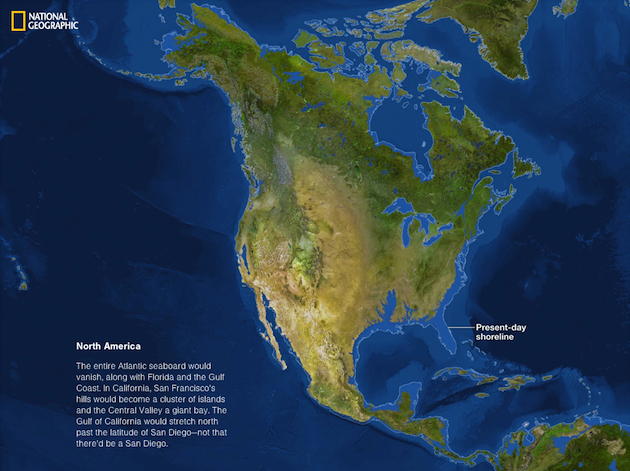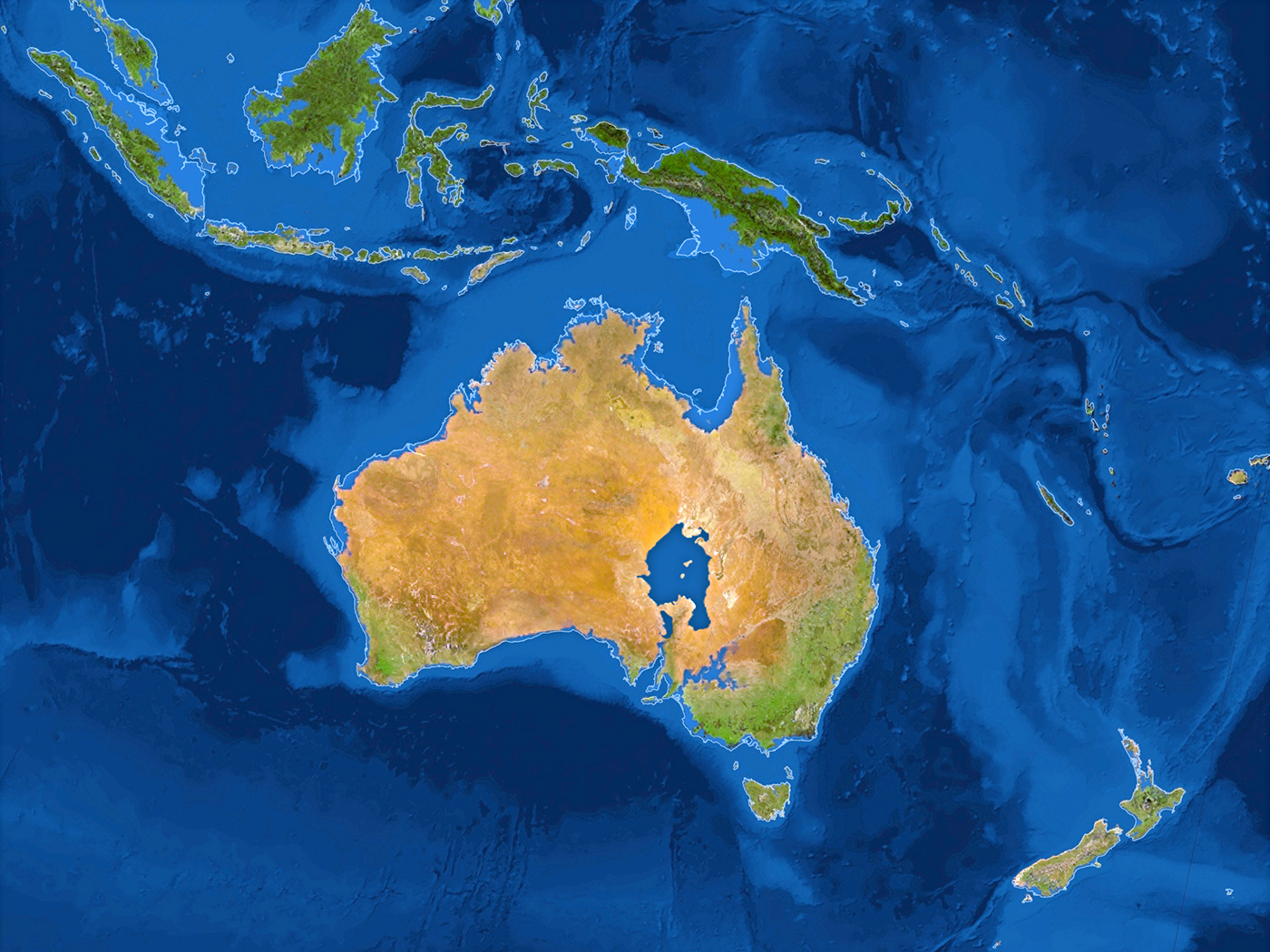In an interactive article titled “If All the Ice Melted,” National Geographic invites you to “Explore the world’s new coastlines if sea level rises 216 feet. The maps here show the world as it is now, with only one difference: All the ice on land has melted and drained into the sea, raising it 216 feet and creating new shorelines for our continents and inland seas.”
As the article points out, “There are more than five million cubic miles of ice on Earth, and some scientists say it would take more than 5,000 years to melt it all. If we continue adding carbon to the atmosphere, we’ll very likely create an ice-free planet, with an average temperature of perhaps 80 degrees Fahrenheit instead of the current 58” (Ibid.).
This scenario is contrasted solely with current demographics, and the visual representation of such a possible, future event is sobering. In North America, for example, the entire Atlantic seaboard would vanish beneath the waves, along with Florida and the Gulf Coast. Much of California would also be underwater – San Francisco’s hills would become small islands in the Pacific Ocean, the Central Valley would become a huge bay, and the Gulf of California would extend north, past what once was San Diego.
South America would lose Buenos Aires, coastal Uruguay, and most of Paraguay. Africa would be largely untouched, but much of it would become inhabitable because of the increased temperature. In Egypt, Alexandria and Cairo would be “swamped” by floodwater from the Mediterranean.
Europe would be hard-hit: London would disappear, as would Venice, the Netherlands, and most of Denmark. As for Asia, the infographic states that land currently inhabited by 600 million Chinese would be underwater, as would all of Bangladesh and coastal India. Australia would gain a new sea in the center of the continent but would also lose the coastal strip where more than 80 percent of the population currently lives. And Antarctica, which contains four-fifths of all the ice on Earth, would all but disappear.
These conclusions are obviously speculative because nobody really knows how long it would take for all the ice to melt or what the ultimate effects would be. “Warming temperatures contribute to sea level rise by: expanding ocean water; melting mountain glaciers and ice caps; and causing portions of the Greenland and Antarctic ice sheets to melt or flow into the ocean… It is more difficult to predict how much changes in ice sheets will contribute to sea level rise… Regional and local factors will influence future relative sea level rise for specific coastlines around the world… Relative sea level rise also depends on local changes in currents, winds, salinity, and water temperatures, as well as proximity to thinning ice sheets.”
Either way, sea level rise is a major concern. As the Environmental Protection Agency points out, global sea level has risen by about 8 inches since 1870, and it is expected to rise at a much greater rate during the next century (source).
Photo credits: Jason Treat, Matthew Twombly, Web Barr, Maggie Smith, NGM Staff; Art: Kees Veenenbos; Sources: Philippe Huybrechts, Vrije Universiteit Brussel; Richard S. Williams Jr., Woods Hole Research Center; James C. Zachos, University of California Santa Cruz; USGS, NOAA, ETOPO1 Bedrock; 1 Arc-Minute Global Relief Model.
Editor’s note: Many thanks to graduate student Antonio Medrano for suggesting this material.






